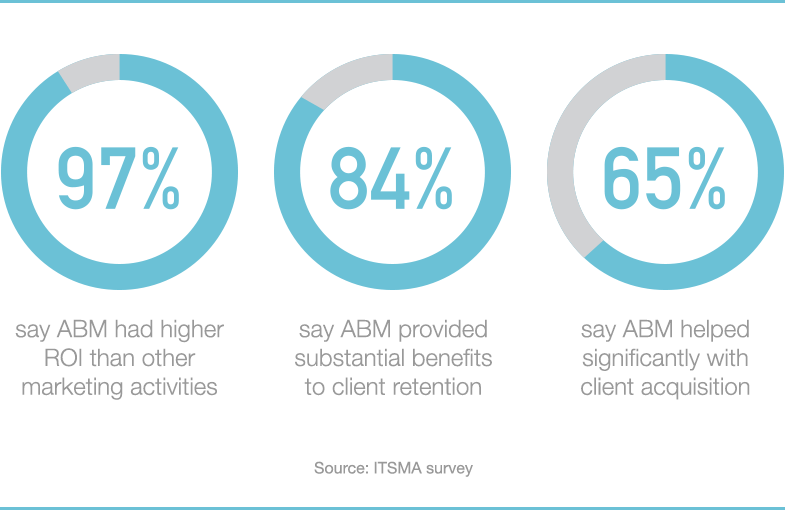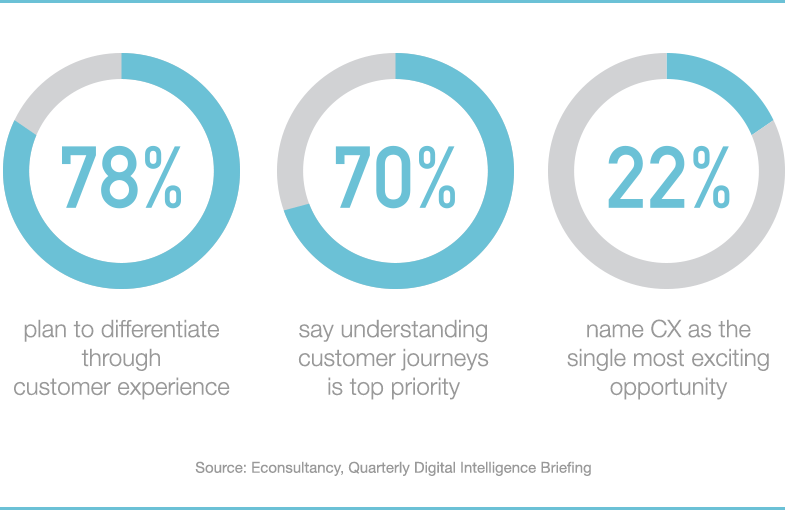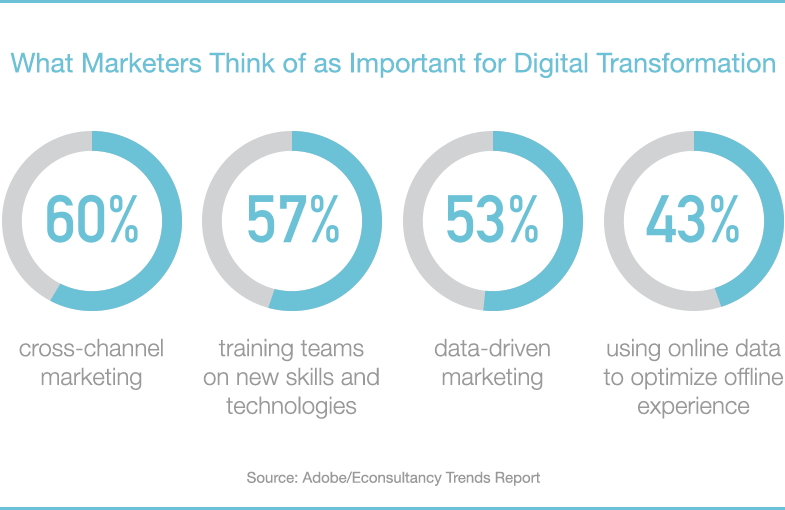’Tis the season of traditions, family gatherings, insane amounts of food, holiday travel and office parties.
It’s also the season of marketing predictions.
Somewhere between carving a turkey and ringing in the new year, marketers take stock of the current year and try to take a stab at guessing what predicted trend will actually become the next driver of modern marketing.
Predicting the future is a tricky business, and while we don’t claim to have a crystal ball, we’ve highlighted the critical aspects of modern marketing that are sure to impact your company’s future – no matter what the next year brings.
Are you ready to see the future?
Do you have your own predictions? Email us!
Need help figuring out what’s best for your company? Contact us to schedule a conversation.
Focus is crucial, but it’s also, oh-so challenging! FoMO can be paralyzing. But imagine what would happen if instead of constantly trying to take on the whole mountain, you focused on a single, vitally important – yet realistically accomplishable – piece?
First, rethink your approach to marketing planning to enable a transition from “getting a lot done” to accomplishing a single, vitally important piece that, upon achievement, would deliver significantly improved, tangible results.
Narrowing your focus makes the world of options a whole lot smaller and, therefore, enables your marketing team to stop working on everything and zero in on select strategies and programs in service of achieving your single primary goal.
The typical planning process won’t get you there, but this practical (and, yes, a little radical) approach to marketing planning just might.
One much-talked about approach that helps focus marketing and sales resources on fewer, specific target accounts, as opposed to marketing to the masses, is Account-Based Marketing (ABM).
According to the ITSMA Survey, ABM delivers the highest ROI of any B2B marketing strategy or tactic.

Think about it: Perhaps you are connected to 500 people on LinkedIn, and of those connections, 10 work for organizations that represent your ideal target account. You could try to build and maintain relationships with all 500 of your connections, but it’s unlikely you could be personal and relevant enough to attract and win over the 10 you really want. But what if you put 100% of your effort and resources into just those 10 highly qualified, revenue-valuable prospects?
So, let your 2017 marketing motto be: stay focused, start smaller, go niche!
Read more about focused marketing planning
Read more about Account-Based Marketing
As marketers, we often talk about customer experience, and yet there are so very few B2B brands that excel in this area. Why is that?
Most companies think about CX in very broad, generic terms, and they don’t consider key factors that can fundamentally change their client journey from ordinary to unforgettable and make it more bottomline-focused along the way.

Let this be the year when you challenge your company to redefine its approach to customer experience!
Make your customer experience a results machine
Mapping Out Your Customers’ Journeys
Charting the Changing Customer Journey: Interview with David Bell, a professor of marketing, at the Wharton School
We live and work in a fully integrated world. We glide in and out of physical and virtual environments, hop devices – and fully expect seamless experience along the way.
Yet in marketing, there’s still a tendency to separate all things digital. This viewpoint and its resulting behaviors are becoming increasingly costly, both in tangible bottom-line costs and lost opportunities.
First, it creates operational and financial inefficiencies – overlap of roles, duplicated efforts, wasted time and dollars.
What’s worse, marketing strategies implemented in silos result in a fragmented message, inconsistent image, confused audiences and overall significantly reduced impact of your marketing communications.
By any measure, this is bad marketing!
Today, synergy between data, content and channels is a must, and it’s time to put an end to the “digital vs. traditional marketing” way of thinking and realize that it’s just “marketing.”

Read about new rules of marketing in the age of digital transformation
And not only will the future require full integration, it also will require a unified experience inside and out, which means fundamental changes in organizational structure, team makeup and overall marketing culture within organizations.
It also means understanding the difference between simply communicating across multiple channels and touchpoints and creating a seamless customer experience across the entire customer journey.
Enter the next evolutionary step in modern multi-channel marketing – omni-channel! Although they sound similar and are often used interchangeably, there’s one fundamental difference: multi-channel means message distribution across many channels, online and off, and omni-channel is concerned with taking all of the disparate, individual channels and touchpoints and creating a single, unified, seamless experience across the entire customer lifecycle, thus building much stronger, lasting customer relationships.
So, not only can your customers interact with your brand across many channels, but the channels themselves are also connected.
What’s more, the customer is now at the center of it all. And that requires shifting our marketing culture from being channel obsessed to being 100% focused on customers and their needs.
In 2017, more than one-third of businesses will restructure to shift to customer-obsessed operations.
Forrester
Putting the customer at the center of it all requires researching your audiences beyond a few demographic facts and creating detailed audience profiles (or buyer personas) that include everything from goals, challenges and personal values to channel preferences.
Has your company developed truly useful and insightful buyer personas? Not a few general stereotypes equipped with made-up names, but an in-depth study of individuals behind your “client base”?
Do you understand their aspirations and emotional needs? Do you know what interests and motivates them, and what inspires them to take action? Do you know where and how to reach them? Do you speak their language?
If not, it’s time to revisit your personas. Just like your brand, your audience profiles evolve over time and need to be revisited periodically.
Get tips for creating better buyer personas
Learn what mistakes to avoid when creating buyer personas
Everything in marketing still starts with the brand. Unfortunately, many companies don’t have a “brand” – they have a visual theme and a logo, maybe a slogan, but they don’t have a brand.
More than ever before, the omni-channel approach will require a brand that is so strong, clear and differentiating that it can adapt to the ever-changing marketing landscape without getting lost in translation.
Today, you simply cannot bypass creating brand strategy and fully defining your brand – its purpose, values, promise, personality and more. More than ever before you need this strong strategic glue to hold together your corporate communications.
How long has it been since your last brand audit? If more than 12 months, it’s time to put this on your marketing to-do list!
Read more about what a brand strategy is and what it isn’t
Download our Brand Toolbox to assist you with your next brand audit
Building a strong brand is anything but easy. To assist you with the entire process – from conducting your brand audit through rebranding, we’ve developed this Brand Toolbox.
It’s been years since Simon Sinek introduced the idea of “start with why” in his famous TEDx talk, starting a landslide of talks, workshops, articles and followers.
Today’s most effective and differentiating brands are driven by purpose. Taking a stand for a larger purpose gives organizations the competitive edge by allowing both customers and employees to be part of something important – something bigger than business transactions.
Meaningful Brands
See their marketing KPIs perform 100% better overall.
Gain, on average, 46% more share of wallet.
Outperform the stock market by 133%.
Source: Havas Media’s Meaningful Brands Study
Often (and wrongly) used interchangeably with “sustainability” or “CSR,” purpose is both compelling and pragmatic, and it has a strong influence on buying decisions. Purpose influences sales conversations and client relationships. It’s been proven by numerous studies that purpose creates business value, driving positive change, growth and profitability.
Equally as important, it makes for a more powerful and differentiating brand story and leads to marketing communications with greater emotional resonance and relevance.
The Bigger Truth About Meaningful Brands
Why Purpose-Driven Companies Are Often More Successful
Download a free PDF of this article here.